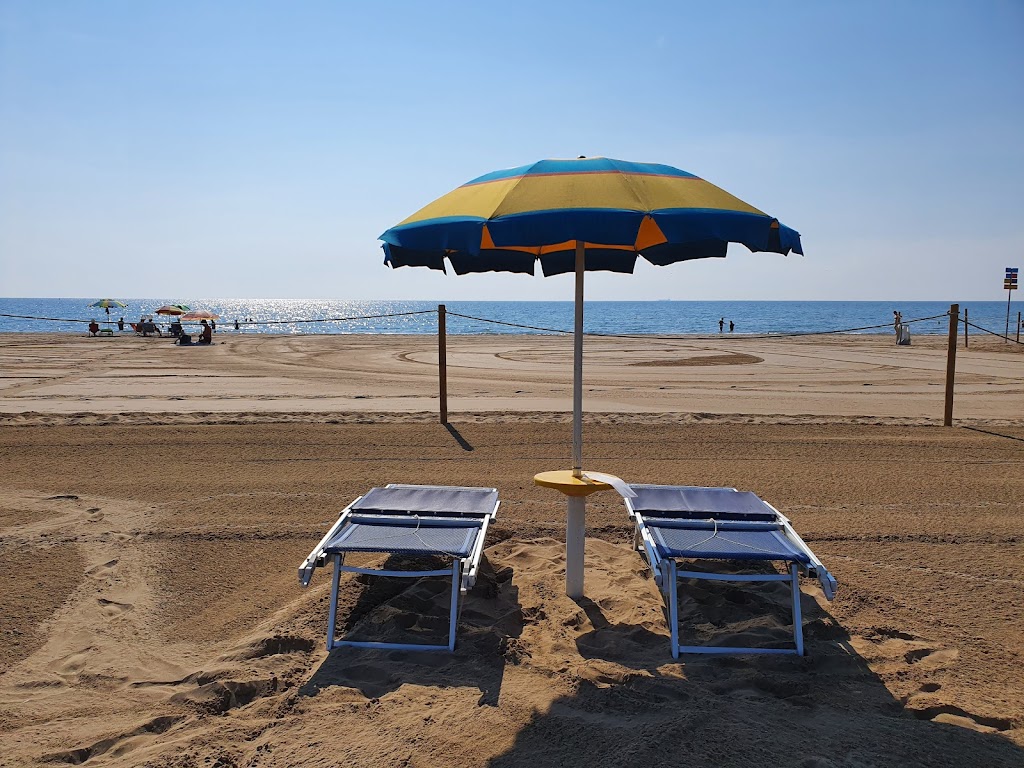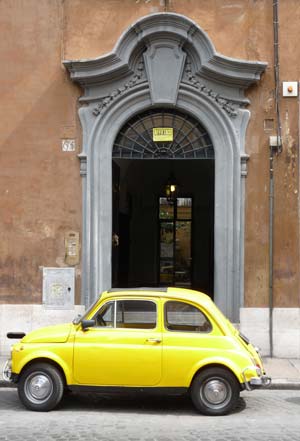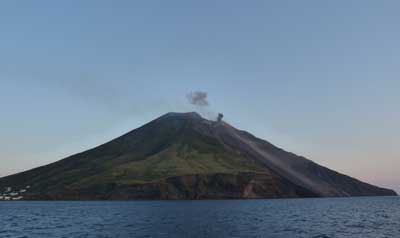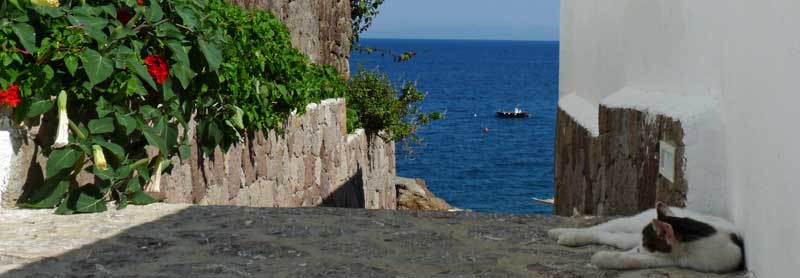Here, in no particular order, are some practical tips for travellers, along with important facts to be aware of and points to consider when planning your holiday in Italy.
- Planning a trip
- Useful information
- Packing
- Language
- Find and book hotels in Italy. With location maps and guest reviews.
Monday closures
Monday is a traditional day of closure for museums and heritage sites. There are some exceptions, but generally you shouldn’t rely on being able to visit any archaeological site, museum or gallery on a Monday. The majority are open every day from Tuesday to Sunday, but it is always advisable to check in advance. Many shops are also closed on Monday mornings.
Long lunch hours

Even in the twenty-first century, quite a few Italian businesses and tourist attractions close at lunchtime. Churches are usually closed from noon until at least 3pm. Especially in smaller towns, museums, tourist sights and shops may follow a similar timetable. In the hotter months opening hours often change to allow for a longer lunchtime closure and extended evening opening hours. As you head southwards in Italy, the long lunchtime closure is more common and lasts longer – if you are visiting the south of Italy in the summer, don’t expect to do anything between midday and 4pm other than eat and rest.
Climate
One of the main reasons for the lengthy ‘lazy’ lunch hour is the climate. In summer most parts of Italy can get uncomfortably hot, and it is best to avoid much activity in the middle of the day. In the winter, the north of Italy and all the country’s mountainous areas are cold and can be snowy. Travellers should check a weather forecast and average temperatures before departure, and be prepared for the likely weather.
> Coping with the heat in Italy
Sunday travel
Italy is fairly well served by public transport, with trains or buses connecting villages, towns and cities. There is generally a winter timetable and a summer timetable for these services, and it is always a good idea to research times in advance, where possible. Services are least frequent on Sundays and public holidays, and in general these aren’t the best days to plan an excursion, especially if you are using buses. Feriali and festivi are key words in timetables. Feriali are the days Monday to Saturday. Festivi are Sundays and public holidays. Buses between towns and villages are often timetabled around school terms and lesson times, and may only run on school days (scolastici). Where timetables are heavily annotated and confusing to outsiders, I’d suggest asking locally for assistance in interpreting them and in finding bus stops and ticket-sellers.
Savings for seniors, students, children and others
Most Italian tourist attractions offer reduced-price admission for under-18s, 18-25s and students. State-run monuments and museums currently offer free admission to under-18s and some students from the EU and “other countries with reciprocal arrangements”. Since Italy’s ruins are crumbling away due to lack of funds, however, this could be a generous gesture too far and may not continue indefinitely (free entry to over-65s has been scrapped already, at the time of writing).
If you don’t fall into one of these ‘discounted entry’ categories, you may still be able to save money. Every year Italy usually has a number of days when admission to all state monuments and museums is free. Once this consisted of a ‘heritage week’ (Settimana della Cultura) and more recently there has been a scheme offering free admission on the first Sunday of every month. Occasionally there are other special initiatives offering free entry – recent examples have been free entry for women on International Women’s Day, free admission for visitors on their birthdays, special offers during local feast days, and two-for-one tickets on Valentine’s Day. Some of these offers will be highlighted on Italy Heaven (check out the blog and Twitter), and you can find more information at the official website of Italy’s heritage ministry or individual museum websites.
> Ministry for Heritage
Strikes
Strikes are not uncommon in Italy. They are almost always announced in advance – and sometimes they are subsequently postponed. Transport strikes are the most likely to disrupt your travel, but occasionally they can close down museums and heritage sites too.
>Transport strikes
Other disruptions and closures

Italy is a marvellous country – but even as I began writing this sentence, sitting on an aeroplane, the elderly Italian lady alongside gave me her own opinion. She was leaving Italy for ever, she told me, commenting on how dreadful Italy was, and how chaotic: ‘nothing works’. While very frustrating for long-term residents, Italy’s faults needn’t drive the temporary visitor to such despair. It is best approached with a laidback attitude and an affection for the overall experience. You may well find that the cathedral you want to visit is closed, that the painting you want to see is absent being restored, or that the art gallery is closed due to staff shortages. Perhaps you’ll arrive at the restaurant you’ve read about only to find it is closed on Tuesdays. This kind of misfortune isn’t unusual, and the traveller should try to remain philosophical about the inconvenience and appreciate the overall pleasure of a holiday in Italy. A phrase book and a bit of flexibility in your travel plans can help surmount problems.
Budget
Obviously your travel budget will be hugely affected by the rate of exchange. In the time I’ve been writing this website Italy has gone from being a bargain for UK travellers to being of a roughly similar cost to UK travel. This may well change again. Train travel and eating and drinking are likely to go on being surprisingly affordable – or at least, in the case of food, being better quality than you could get for the equivalent price elsewhere.
The biggest expense is accommodation, where you get what you pay for. Prices have risen in recent years, but you can still find reasonably good value, especially outside the main tourist destinations. €120 is probably a benchmark for a decent – not lavish – double room, but there is a lot of variation depending on the location and time of year. You can occasionally find a good two-star or B&B for under €80, but elsewhere may need to spend €160 for decent accommodation in a town centre.
I would estimate that a traveller should budget for spending a minimum of €40 per day on average, plus accommodation. This would allow for modest admission fees, public transport, take-away food and possibly one light meal per day. If you want at least one generous sit-down meal per day, add at least €25 to that. To eat really lavishly or visit expensive attractions, this figure would increase significantly. If you are travelling on a shoestring, you could manage much more cheaply by subsisting on Italy’s fine traditional take-away food.
Food and drink
Eating and drinking are among the very greatest pleasures of Italy. You will find restaurant tips and various bits of information throughout this website. It is useful to bear in mind that eating places are usually closed one day a week, and that they open for meals at certain times, typically 12.30pm-2.30pm and 7pm-11pm, with lots of variation between cities. A traditional Italian meal has five courses but it is perfectly normal and acceptable to order just what you want and no more. If you’re in a group picking and choosing between dishes from different courses, just explain which dishes you want to arrive at the same time.
Stamps and postage
You can buy stamps in Italy at tabacchi shops, which are indicated by a sign with a T, and post offices. Although the postal service is reputedly unreliable, I’ve found that international postcards tend to arrive very quickly. A stamp is a francobollo; the plural is francobolli. Ask for un francobollo per followed by the destination country, for example: due francobolli per Inghilterra.I have found bizarre and unexplained discrepancies between stamp prices in different parts of Italy, but they all seem to work.
Post your letters and cards in the correct slot in a letter box. These are usually red and built into walls. In cities there will often be two slots, labelled ‘Per la città’ and ‘Per tutte le altre destinazioni’ – ‘for the city’ and ‘for all other destinations’.
Language
In urban centres and around tourist attractions, you will find many Italians who can speak English at a functional level. However, learning a few words of Italian will be polite and will help smooth your path. Outside the main tourist centres, a phrase book will be useful and swotting up on some Italian in advance could add immeasurably to your holiday experience.
> Learn some Italian vocabulary and read some language tips
Traffic and driving

The Italian style of driving is skilful but also aggressive and selfish. The country has twice as many road deaths as the UK. If you are planning to drive in Italy, read up on the country’s regulations beforehand. Traffic drives on the right. Most towns have pedestrian zones, one-way systems and narrow lanes in the centre of town. Increasingly, urban areas are instituting a system called ZTL, Zona a Traffico Limitato, indicated by street signs. This means that traffic access is restricted at certain times, and if you enter one of these zones you may find a large fine is payable, with payment demands arriving on your doorstep long after you have returned home. Specific information and maps should be available on the website of the town comune, or council. Hotel guests can generally obtain permission to enter these zones, so if you are driving to a town centre hotel, ask them about this. You may need to send a note of your car numberplate to obtain a temporary pass. Note that Italian hotels do not always have free parking spaces; you should check the hotel information when you book, and reserve a place if necessary.
Pedestrians need to employ both caution and confidence to deal with Italian traffic. Striped zebra crossings give you the right to cross a road, but cars will rarely stop until you have started to walk confidently into their path. At pedestrian traffic lights, a green man is the sign that you can cross – but be aware that some cars (those turning onto the street) can drive through these lights, though you still have the right to cross in front of them.
Tipping
Tipping isn’t widespread in Italy. At restaurant meals Italians will generally leave a euro or two as a tip, although it is not usual to tip in family-run businesses where you are waited on by the proprietors. Waiters will be aware that foreigners are likely to tip more generously, but it is up to you how much you give. I tend to leave around 10%. Occasionally in touristy restaurants, service will be added to the bill, sometimes at an extortionate rate – check the menu in advance. It is normal for a cover charge (coperto) – typically 2 per person – to be added to a bill; this should be stated on menus. In smarter hotels, if a porter shows you to your room they will be glad of a tip, but that is at the guest’s discretion.
Problems and emergencies
112 is an emergency number that will work across the EU, with the capacity for answering calls in a number of languages. Italy also has its own national number for emergencies: 113. Italy has several police forces with different functions. The ones you are mostly likely to see are the state police, the local town and municipal police, and the smartly-uniformed carabinieri, a military police force. Any of them should help you in an emergency.
If you lose your passport, need advice or run into serious trouble, contact your embassy. For lesser problems, hotel receptionists and local people can be a helpful source of information, directions and advice. Hotel receptionists will usually speak some English, have local knowledge, and be equipped with the contact details of doctors, hospitals, taxis and so on. I always carry my hotel’s address and phone number with me in case I encounter problems or get lost.
Volcanoes, earthquakes and other disasters

Italy is susceptible to various forms of natural disaster, including volcanic eruptions and earthquakes. Of course these major events are very rare and extremely unlikely to affect you. Italy is – or claims to be – well-prepared for all threatened eventualities. There will generally be emergency and evacuation procedures in place, so look out for yourselves and pay attention to advice and instructions.
Tourist information offices
Tourist information offices in Italy are very erratic. Most towns have at least one, and some have three, operated by the town, the provincial and the regional authorities. Their quality varies wildly, and opening hours are not always convenient, but a tourist information office is still a good place to begin your explorations. You can generally pick up a free town map, and sometimes whole volumes of tourist information are available, translated into English and so verbose they make this website seem terse. When you’re planning to visit a new town in Italy, it’s a good idea to note the location and opening hours of the tourist office, if you can find these out in advance.
Bad behaviour
It’s not always obvious to foreign travellers what may give offence in Italy – or even break the law. You may be stopped, ticked off or fined by police/officials for acts like leaving a shop without a fiscal receipt, crossing a street near but not on a pedestrian crossing or not validating your ticket on public transport. These are unlikely eventualities, but can happen. Exasperated with tourists, some towns – including Venice, Verona, Capri and Lake Garda resorts – have instituted local laws forbidding indecent dress (topless men, swimwear anywhere other than the beach, even noisy clog-type footwear), sitting on monuments and bridges, and picknicking near monuments. Fines are occasionally imposed for these acts, but more importantly, this is an indication of behaviour that is regarded as antisocial. Note that even bare shoulders and thighs are considered fairly inappropriate, and absolutely must be covered when entering a church. Visible drunkenness is also socially unacceptable. Italians generally walk on the right, and this is important in crowded lanes like those of Venice. It’s generally a good idea to carry photographic ID, or at least a photocopy of your passport – by law, Italians must carry ID cards with them.
Tourist attractions are often surrounded by illegal street pedlars selling counterfeit designer goods. Don’t buy from them. In addition to the goods being shoddy, the materials possibly toxic, and the sellers fleeing at the sight of the police, you are yourself liable to be fined if you are caught buying items from them. These fines can run up to thousands of euros, so you will have bought yourself a very expensive ‘bargain.’
Buses and trains
You can find plenty of information about Italian public transport in the travel section of this website. A couple of useful tips are that you usually buy bus tickets before boarding a bus in Italy, and that you can frequently buy tickets for regional trains at station news-stands, as well as at the ticket office. On many Italian trains you can travel with only a reference number or print-out from an online booking, but when you have a papar ticket, you must remember to validate it in the machines provided in stations.
> More about travel to and around Italy
Enjoy yourselves
A holiday in Italy is all about enjoyment. The country has far more than its fair share of sunshine, fascinating cities, glorious views, beautiful beaches, art and culture, friendly locals, fine wines and world-class food. Don’t focus too much on itineraries and schedules, try to let any minor inconveniences or inefficiency wash over you, and take the time to appreciate and savour all the country has to offer. Whatever your planned highlights and must-sees were, the most memorable moment may well be that lengthy meal overlooking the water, where service was slow and the house wine was cheap, and you passed hours soaking up the views and sunshine and conducting in-depth research into the local cuisine.

On this site
Useful links & books